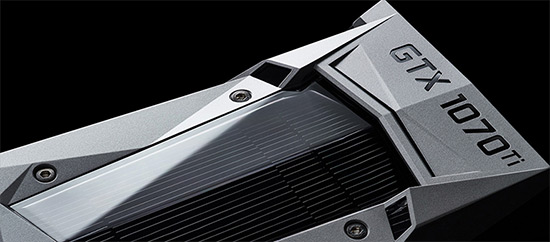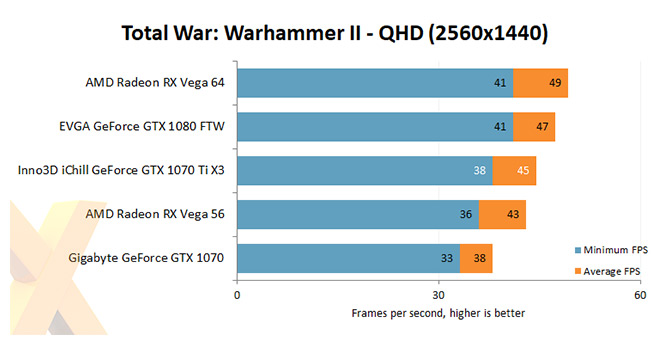Our Aim
To provide you with an overview on New And existing technologies, hopefully helping you understand the changes in the technology. Together with the overviews we hope to bring topical issues to light from a series of independent reviewers saving you the time And hassle of fact finding over the web.
We will over time provide you with quality content which you can browse and subscribe to at your leisure.
TekSpek 's

NVIDIA GeForce GTX 1070Ti
Date issued:

NVIDIA has been steadily expanding its GeForce 10-series family through a succession of launches over the last 15 months. The premium segment begins with the GeForce GTX 1070 - a powerful graphics card whose qualities enable it to play many of the latest games at a 1440p resolution (2,560x1,440) with eye candy turned on.
Even so, rival AMD has also been busy at work over 2017, readying its riposte in the form of the RX Vega cards. Said GPUs arrived in August 2017, and the RX Vega 56 and RX Vega 64 offer stern competition to the GeForce GTX 1070 and GTX 1080. In fact, the popular GTX 1070 can be made to feel a tad slow in such company, and NVIDIA has realised that it has a too-large gap between it and the better-performing GTX 1080.
NVIDIA's answer to the burgeoning AMD threat and relatively large price and performance gap between its premium graphics cards has resulted in the introduction of the GeForce GTX 1070 Ti.
This graphics card is built to provide NVIDIA with a really solid proposition in the £400-£500 market, so in this TekSpek we take a look at how the company has achieved its aim.
Appreciating that GTX 1070 Ti is cut from the same cloth as other premium GTX 10-series GPUs, it is instructive to take a look at the vital specifications of three leading GeForce cards.
| GeForce GTX 1080 | GeForce GTX 1070 Ti | GeForce GTX 1070 | |
|---|---|---|---|
| Launch date | May 2016 | November 2017 | June 2016 |
| Codename | GP104-400 | GP104-300 | GP104-200 |
| Architecture | Pascal | Pascal | Pascal |
| Process (nm) | 16 | 16 | 16 |
| Transistors (bn) | 7.2 | 7.2 | 7.2 |
| Die Size (mm²) | 314 | 314 | 314 |
| Core Clock (MHz) | 1,607 | 1,607 | 1,506 |
| Boost Clock (MHz) | 1,733 | 1,683 | 1,683 |
| Shaders | 2,560 | 2,432 | 1,920 |
| GFLOPS | 8,873 | 8,186 | 6,463 |
| Memory Size | 8GB | 8GB | 8GB |
| Memory Bus | 256-bit | 256-bit | 256-bit |
| Memory Type | GDDR5X | GDDR5 | GDDR5 |
| Memory Clock | 10Gbps | 8Gbps | 8Gbps |
| Memory Bandwidth | 320 | 256 | 256 |
| ROPs | 64 | 64 | 64 |
| Power Connector | 8-pin | 8-pin | 8-pin |
| TDP (watts) | 180 | 180 | 150 |
| Current price (from) | £490 | £420 | £360 |
A Bit of Both
The GeForce GTX 1070 Ti sensibly takes something from the GTX 1070 and GTX 1080 GPUs. It is based on the same silicon and blueprint as both, minimising the amount of engineering work Nvidia has had to undertake in the transition.
A graphics card's shaders provide a rough indication of just how much performance it is likely to have. The GTX 1070 has 1,920 of these, accommodated in 15 groups of 128. The GTX 1070 Ti, meanwhile, ups this to 2,432, with 19 groups, or SMs, active. The GTX 1080 represents the full implementation of the GP104 die, encompassing 20 groups. The reality is that NVIDIA switches off SM units to artificially create different graphics cards.
What this ultimately means is that GTX 1070 Ti is much closer to GTX 1080 than to GTX 1070. Multiplying shaders by the frequency gives you the total amount of graphics throughput known as GFLOPS. Note that GTX 1070 Ti produces over 8,000 GFLOPS when running at full speed, which is over 25 per cent more than GTX 1070 standard.
GTX 1070 Ti has base and boost frequencies taken from the other 10-series cards, translating to 1,607MHz core and a conservative 1,683MHz boost, though retail cards are almost guaranteed to run faster due to really good cooling.
NVIDIA also understands that it needs to properly differentiate the 1070 Ti from the more expensive GTX 1080. It does this by dropping the latter's GDDR5X memory, operating at 10Gbps, and replacing it with the 8Gbps also present on the GTX 1070. That said, all three share the same 8GB frame buffer.
Pulling it all together, GeForce GTX 1070 Ti is a hybrid of the two existing cards that sit below and above in the Nvidia pecking order. That makes sense as no one GPU is really stepping on the toes of another.
NVIDIA's range of add-in board partners - Asus, MSI, EVGA, Gigabyte, et al - already have multiple cooling solutions for existing premium GeForce cards. It is highly likely that these will be re-used for the GeForce GTX 1070 Ti, greatly reducing the complexity and time to market.
As usual, it is expected that these partners will have multiple variants of the GTX 1070 Ti, just as they do for other GPUs, thus offering a full spectrum of choice for the eager gamer.
Performance Potential
Appreciating that GTX 1070 Ti's specifications suggest it is an ideal fit between the two GeForces we have already spoken about, how does it perform in the wider landscape once AMD's new RX Vega GPUs have been taken into account?

Looking at benchmarks from leading websites, the answer is just as intended. A reference-clocked GTX 1070 Ti is a touch faster than the cheaper RX Vega 56 but slower than the dearer RX Vega 64.
The introduction of the GeForce GTX 1070 Ti offers gamers more choice than ever before. Got £400 burning a hole in your pocket and you want a premium graphics card good for quality QHD gaming today and tomorrow? The NVIDIA GeForce GTX 1070 Ti is a fine choice.
Scan Computers list a wide range of NVIDIA GeForce GTX 1070 Ti cards, which you can view in the graphics cards section.